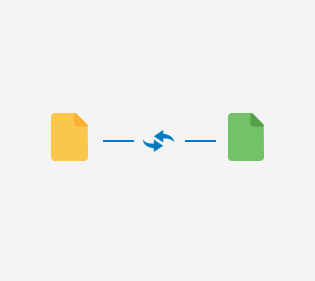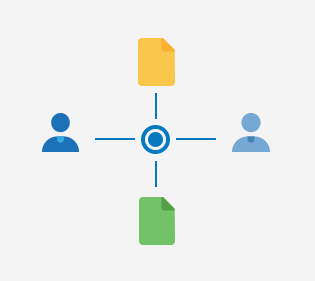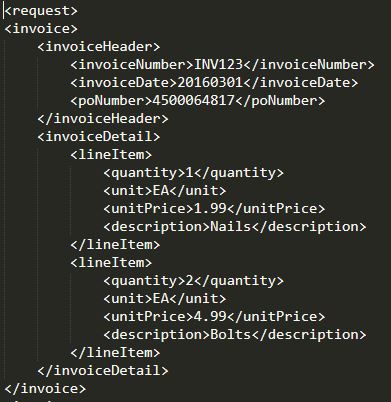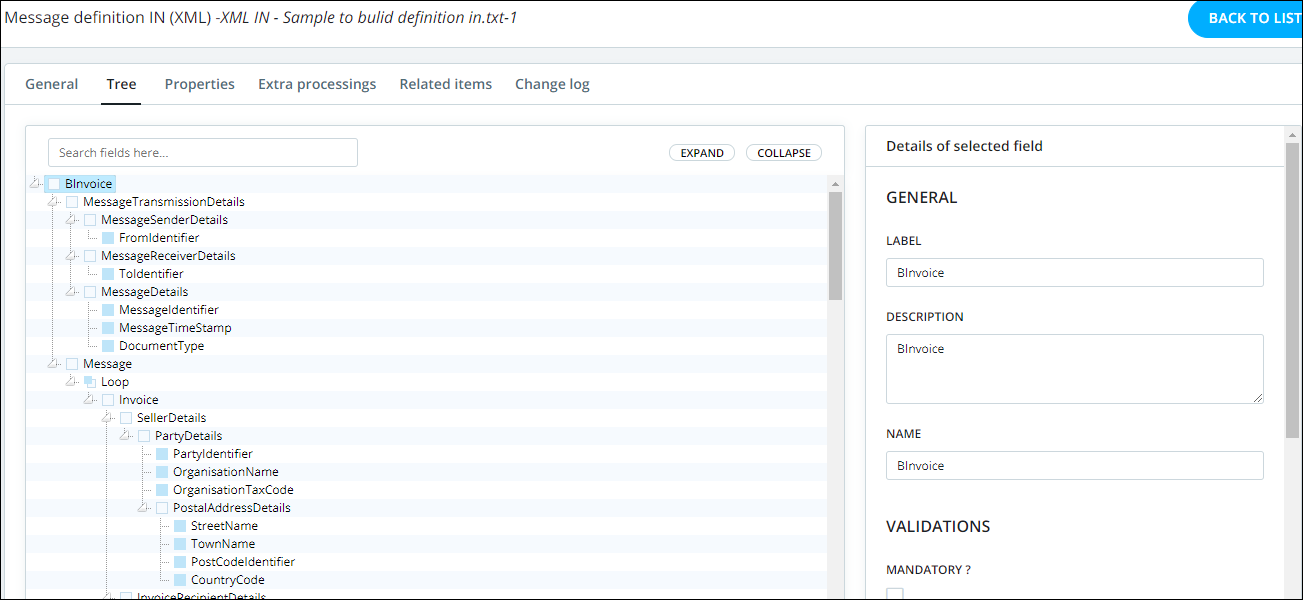Need XML? This is the place!

What is XML?
XML stands for Extensible Markup Language and is used for many data integration purposes. The basics of XML are built from lines of code that contain a tag and data. A tag is something that identifies what the data is, like a label. <invoiceNumber> for example would be a tag identifying the data of an invoice number. Tags open and close, containing the data they are labelling. So in an XML invoice file, you might see:
<invoiceNumber>INV123</invoiceNumber>
<purchaseOrderNumber>4500012345</purchaseOrderNumber>
<invoiceDate>20160115</invoiceDate>
Each tag represents a field of data that can be used to communicate information.
Example XML document
Here’s what an XML document looks like. As you can see, complex files can be difficult to understand and look more like code than a readable file.
Because an XML tag can be anything, there is a lot of variety in XML files. A system can define whatever it wants as a tag to communicate information. In order to improve efficiency, many industries have adopted this standards. These are standards where users agree to use the same tag names for the same information. Example standards are cXML, UBL, PIDX, IDOC, etc. The syntax of these standards are the same, but the tags and the data they communicate are different.
XMLs can also have an XSD file associated with them. This is another file type similar to XML that defines the specifications of the files to use. It basically tells a system what the tags are, how they are structured, what data is allowed in each tag, and how often they will repeat. This allows for a much more robust validation of the XML files coming in and out of the system.
Here is how the document looks in Babelway
As you can see, Babelway takes the complicated XML code and represents it in a more visual and understandable way. Each data within a tag is represented in a node that can be used in the visual transformation tool. Babelway allows you to use all of a portion of the data, apply validations as needed, and manipulate it in any way possible. Since each XML may apply a different standard or maybe a unique file, Babelway gives you the flexibility to use the data however necessary.
Who uses XML?
Würth …

Build from sample file or from an XSD
Create your incoming or outgoing XML structure from a sample or from an associated XSD file
- Upload your sample and get it parsed immediately or upload an XSD to build the structure
- Remove, add, edit segments to customize for strict or loose application of XML standards
- Apply strict data validation from the XSD file or manual validation inputs.
- Support for all standards that you may need

Transform any format
Use simple drag & drop tools to map your XML message to any other format for easy import/export in/from your database
- 12+ formats to choose from: CSV, multi-record text file, UBL, Excel, IDOC, EDIFACT, etc
- Hundreds of transformation functions available or build your custom functions
- Use lookup tables tables to replace data sets
- Change your XML structure without loosing your transformation maps

Connect to anyone
Connect your Babelway environment using any EDI or non-EDI communication protocols
- 12+ communication protocols supported including X400, VAN, AS2, SFTP, VPN, etc.
- Define retry strategies for maximum robustness
- Get notified and intervene immediately in case of processing or delivery issues
And last but not least:
Get extended support from the experts
Babelway is not only a great self-service platform but also a team of pros ready to help you succeed.
- Access our support helpdesk anytime and ask your questions. You will be answered as soon as max 60 minutes
- Spot the ‘reuse and save time’ zone on the right of the screen? Import messages and maps from our catalog
- Access online training material through Babelway Academy

“I have to say how helpful Babelway support is. It was amazing how quickly I was getting answers to my questions. Sometimes even at all hours of day and night.”
IT Department, Vandeputte


